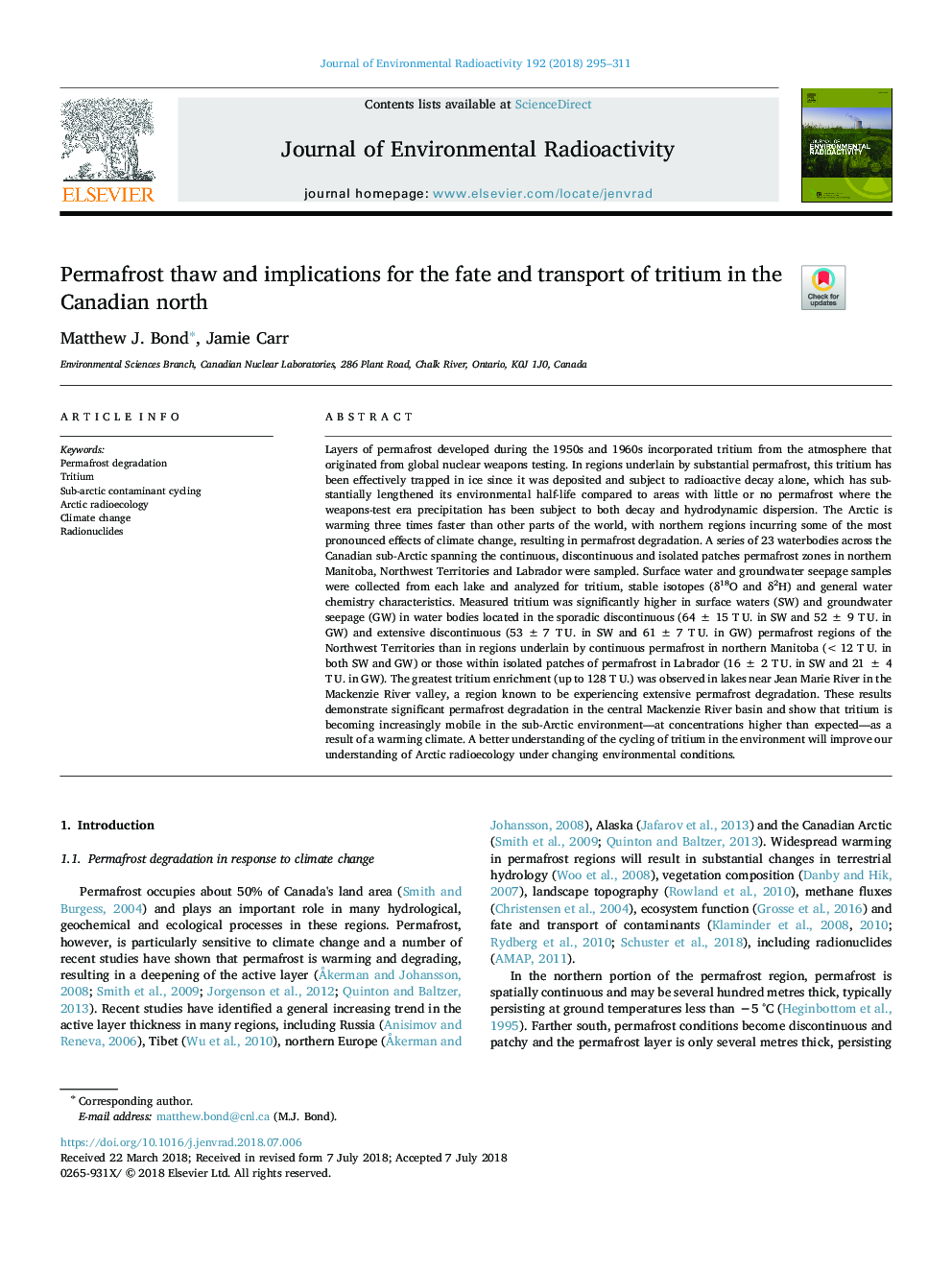| کد مقاله | کد نشریه | سال انتشار | مقاله انگلیسی | نسخه تمام متن |
|---|---|---|---|---|
| 8080247 | 1521551 | 2018 | 17 صفحه PDF | دانلود رایگان |
عنوان انگلیسی مقاله ISI
Permafrost thaw and implications for the fate and transport of tritium in the Canadian north
ترجمه فارسی عنوان
طوفان مرغی و پیامدهای آن برای سرنوشت و حمل و نقل تریتیوم در شمال کانادا
دانلود مقاله + سفارش ترجمه
دانلود مقاله ISI انگلیسی
رایگان برای ایرانیان
کلمات کلیدی
تخریب مرغوب، تریتیوم، دوچرخه سواری آلودگی زیرسیستم، رادیو اکتیو قطب شمال، تغییر آب و هوا، رادیونوکلئید،
موضوعات مرتبط
مهندسی و علوم پایه
مهندسی انرژی
انرژی هسته ای و مهندسی
چکیده انگلیسی
Layers of permafrost developed during the 1950s and 1960s incorporated tritium from the atmosphere that originated from global nuclear weapons testing. In regions underlain by substantial permafrost, this tritium has been effectively trapped in ice since it was deposited and subject to radioactive decay alone, which has substantially lengthened its environmental half-life compared to areas with little or no permafrost where the weapons-test era precipitation has been subject to both decay and hydrodynamic dispersion. The Arctic is warming three times faster than other parts of the world, with northern regions incurring some of the most pronounced effects of climate change, resulting in permafrost degradation. A series of 23 waterbodies across the Canadian sub-Arctic spanning the continuous, discontinuous and isolated patches permafrost zones in northern Manitoba, Northwest Territories and Labrador were sampled. Surface water and groundwater seepage samples were collected from each lake and analyzed for tritium, stable isotopes (δ18O and δ2H) and general water chemistry characteristics. Measured tritium was significantly higher in surface waters (SW) and groundwater seepage (GW) in water bodies located in the sporadic discontinuous (64â¯Â±â¯15 Tâ¯U. in SW and 52â¯Â±â¯9 Tâ¯U. in GW) and extensive discontinuous (53â¯Â±â¯7 Tâ¯U. in SW and 61â¯Â±â¯7 Tâ¯U. in GW) permafrost regions of the Northwest Territories than in regions underlain by continuous permafrost in northern Manitoba (<12 Tâ¯U. in both SW and GW) or those within isolated patches of permafrost in Labrador (16â¯Â±â¯2 Tâ¯U. in SW and 21â¯Â±â¯4 Tâ¯U. in GW). The greatest tritium enrichment (up to 128 Tâ¯U.) was observed in lakes near Jean Marie River in the Mackenzie River valley, a region known to be experiencing extensive permafrost degradation. These results demonstrate significant permafrost degradation in the central Mackenzie River basin and show that tritium is becoming increasingly mobile in the sub-Arctic environment-at concentrations higher than expected-as a result of a warming climate. A better understanding of the cycling of tritium in the environment will improve our understanding of Arctic radioecology under changing environmental conditions.
ناشر
Database: Elsevier - ScienceDirect (ساینس دایرکت)
Journal: Journal of Environmental Radioactivity - Volume 192, December 2018, Pages 295-311
Journal: Journal of Environmental Radioactivity - Volume 192, December 2018, Pages 295-311
نویسندگان
Matthew J. Bond, Jamie Carr,
